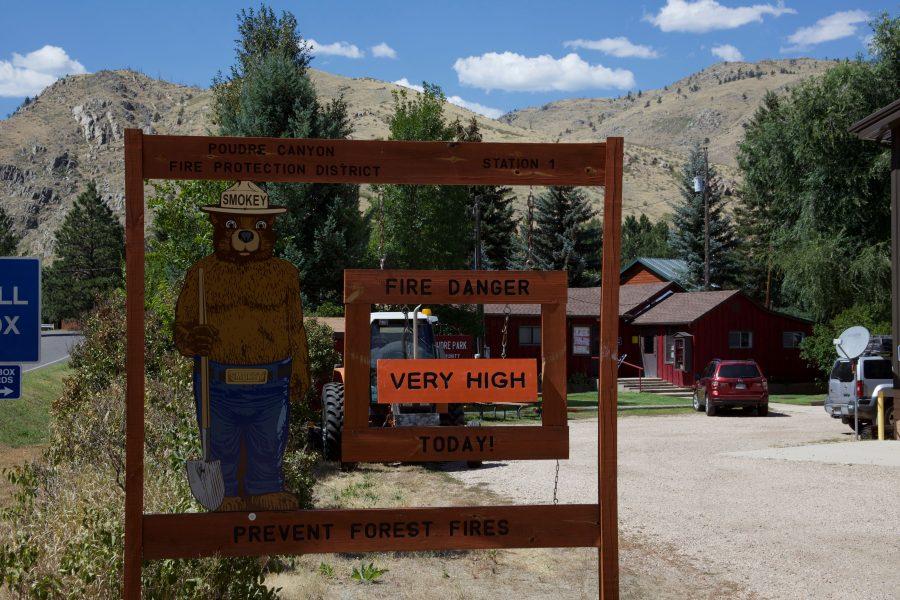Rocky Mountain Region receives large fund to mitigate wildfire risk
A sign featuring Smokey Bear warns drivers of a high fire danger in Poudre Canyon Sept. 1, 2019. Although fires are sometimes healthy for an ecosystem, it is often important to reduce the risk of them. (Ryan Schmidt | Collegian)
Natalie Devereaux
April 27, 2022
The U.S. Forest Service Rocky Mountain Region has recently received an $18.1 million dollar fund to protect regional areas deemed to be high risk for wildfires.
The 20 largest fires in Colorado history have all occurred since 2001, and four of the largest five fires have occurred in the last four years.
The Forest Service is currently working with partners to identify high-risk areas for protection and treatment. Donna Nemeth serves as the press officer for the Rocky Mountain Regional Office.
“Managing wildfires in Colorado and elsewhere across the nation has grown more complex in recent years,” Nemeth wrote in an email to The Collegian. “We are experiencing more extreme fire behavior, more land burning on average each year and more frequent wildfires.”
Along with the increase in wildfires and extreme fire behavior, there has also been an increase in the number of homes in the regions considered fireshed lands.
“The people who live in these communities depend on those resources, so it’s critical to mitigate the wildfire potential in these areas.” -Donna Nemeth, Rocky Mountain Region Forest Service press officer
The Rocky Mountain Region plans to use this funding to treat 10,000 acres of land in the 2022 fiscal year, according to an April 11 press release from the Forest Service. The initial project areas are located in the Arapaho and Roosevelt national forests along with the Pike and San Isabel national forests.
“The initial project areas were chosen because they are considered high-risk firesheds,” Nemeth wrote.
Nemeth also explained the valuable resources in those areas that must stay protected.
“Another reason these areas are a priority is because they are the only sources of water for Front Range communities,” Nemeth wrote. “The people who live in these communities depend on those resources, so it’s critical to mitigate the wildfire potential in these areas.”
The funding received by the Rocky Mountain Region Forest Service is in support of a recent strategy implemented by the United States Department of Agriculture Forest Service called Confronting the Wildfire Crisis: A Strategy for Protecting Communities and Improving Resilience in America’s Forests.
“This strategy calls for the Forest Service to treat 20 million acres on national forests and grasslands nationwide,” Nemeth wrote. “Also, we want to support treatment of an additional 30 million acres of tribal, federal, state, private and family lands.”
This strategy aims to strategically use forest health treatments and the best available resources to end what the Forest Service describes as “a full-blown wildfire and forest health crisis.”
According to the USDA website, the Forest Service plans to work with federal agencies, local communities and individual landowners to create fire-resilient forests on a national scale.
For more information on the USDA Forest Service and the Confronting the Wildfire Crisis strategy, visit their website here.
Reach Jack Miller at news@collegian.com or on Twitter @millerjack02.







